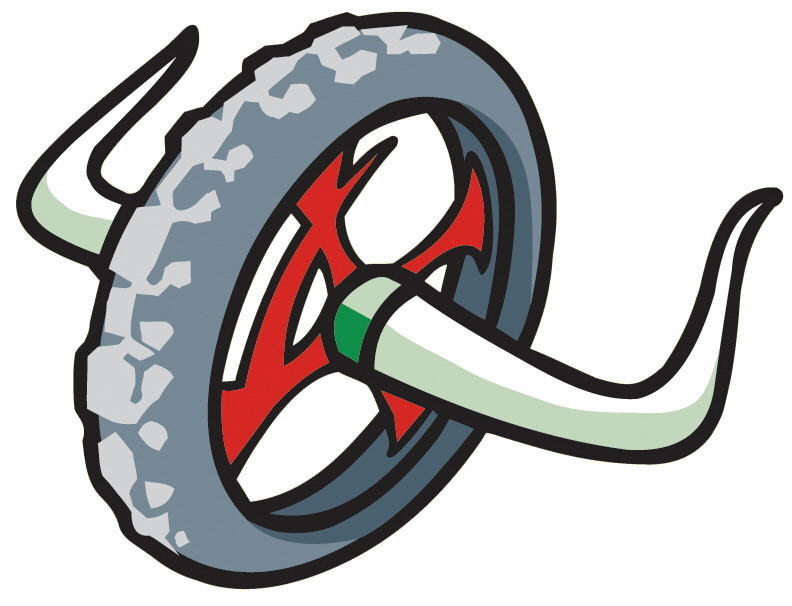다음은 금일자 NY times에서 발췌한 기사입니다.
우리는 바로 이런 살인마들에게 큰 힘을 실어줬던 것입니다TT
기사를 잘 보시면, 이들이 민간인 마을을 점령하려 들어갈때 꼭 두세명을 본보기로 길거리의 나무에 며칠씩 목매달아 놓는다고 합니다. 그러면 마을사람들이 겁나서 매우 유순해 지기 때문입니다. 그리고 이와 유사한 방법을 우리에게도 똑같이 보여줬던 겁니다.
아래 기사에 따르면, 올해 지금까지 약 2500~3000명의 아프간인이 죽었고, 이중 사분의 일이 민간인이었다고 합니다. Nato군과 미군을 합해 올해 현재까지 161명이 사망했고, 아프간 경찰은 379명이 사망하였습니다.
이 기사를 읽고도 우리 정부의 텔레반에 테러자금 지원한 것을 옹호하는 자가 있다면 스스로 인간이기를 저버리는 셈이 될 겁니다.
KANDAHAR, Afghanistan, Aug. 26 — Over the past six weeks, the Taliban have driven government forces out of roughly half of a strategic area in southern Afghanistan that American and NATO officials declared a success story last fall in their campaign to clear out insurgents and make way for development programs, Afghan officials say.
Photographs by Tomas Munita for The New York Times
Police officers in Oruzgan Province, above, have been unable to hold territory gained by NATO and Afghan Army forces.
Taliban fighters are increasingly using roadside bombs, and in a recent attack in Kandahar, they destroyed an armored vehicle, above.
A year after Canadian and American forces drove hundreds of Taliban fighters from the area, the Panjwai and Zhare districts southwest of Kandahar, the rebels are back and have adopted new tactics. Carrying out guerrilla attacks after NATO troops partly withdrew in July, they overran isolated police posts and are now operating in areas where they can mount attacks on Kandahar, the south’s largest city.
The setback is part of a bloody stalemate that has occurred between NATO troops and Taliban fighters across southern Afghanistan this summer. NATO and Afghan Army soldiers can push the Taliban out of rural areas, but the Afghan police are too weak to hold the territory after they withdraw. At the same time, the Taliban are unable to take large towns and have generally mounted fewer suicide bomb attacks in southern cities than they did last summer.
The Panjwai and Zhare districts, in particular, highlight the changing nature of the fight in the south. The military operation there in September 2006 was the largest conventional battle in the country since 2002. But this year, the Taliban are avoiding set battles with NATO and instead are attacking the police and stepping up their use of roadside bombs, known as improvised explosive devices or I.E.D.’s.
“It’s very seldom that we have direct engagement with the Taliban,” said Brig. Gen. Guy Laroche, the commander of Canadian forces leading the NATO effort in Kandahar. “What they’re going to use is I.E.D.’s.”
The Taliban also wage intimidation campaigns against the population. Local officials report that one of the things that the insurgents do when they enter an area is to hang several local farmers, declaring them spies.
“The first thing they do is show people how brutal they are,” said Hajji Agha Lalai, the leader of the Panjwai district council. “They were hanged from the trees. For several days, they hung there.”
NATO and American military officials have declined to release exact Taliban attack statistics, and collecting accurate information is difficult, particularly in rural Afghanistan. According to an internal United Nations tally, insurgents set off 516 improvised explosive devices in 2007. Another 402 improvised explosive devices were discovered before detonation.
Reported security incidents, a broad category that includes bombings, firefights and intimidation, are up from roughly 500 a month last year to 600 a month this year, a 20 percent increase, according to the United Nations.
The rising attacks are taking a heavy toll. At least 2,500 to 3,000 people have died in insurgency-related violence so far this year, a quarter of them civilians, according to the United Nations tally, a 20 percent increase over 2006.
NATO and American fatality rates are up by about 20 percent this year, to 161, according to Iraq Casualty Count, a Web site that tracks deaths in Iraq and Afghanistan. The Afghan police continue to be devastated by Taliban bombings and guerrilla strikes, with 379 killed so far this year, compared with 257 for all of last year.
Yet the Taliban have been unable to take large towns this year and have carried out 102 suicide bombings, roughly the same number as last year, according to the United Nations. A conventional Taliban spring offensive was predicted by many but never materialized, and Western officials say that raids by NATO and American Special Operations forces have killed dozens of senior and midlevel Taliban commanders this year.
Maj. Gen. Bernard S. Champoux, deputy commander for security for the NATO-led International Security Assistance Force, said the Taliban’s leadership was in “disarray” and had not been able to carry out the attacks it had hoped this year and would be even weaker next year.
“This has been a shaping year,” he said. “I think next year will be a decisive year.”
Afghan Army units have performed well, according to Western officials. The trouble has come when the army and foreign troops withdraw, leaving lightly armed Afghan police forces struggling to hold rural areas. Corruption is rampant among the police, and some units have exaggerated casualty rates or abandoned checkpoints.
우리는 바로 이런 살인마들에게 큰 힘을 실어줬던 것입니다TT
기사를 잘 보시면, 이들이 민간인 마을을 점령하려 들어갈때 꼭 두세명을 본보기로 길거리의 나무에 며칠씩 목매달아 놓는다고 합니다. 그러면 마을사람들이 겁나서 매우 유순해 지기 때문입니다. 그리고 이와 유사한 방법을 우리에게도 똑같이 보여줬던 겁니다.
아래 기사에 따르면, 올해 지금까지 약 2500~3000명의 아프간인이 죽었고, 이중 사분의 일이 민간인이었다고 합니다. Nato군과 미군을 합해 올해 현재까지 161명이 사망했고, 아프간 경찰은 379명이 사망하였습니다.
이 기사를 읽고도 우리 정부의 텔레반에 테러자금 지원한 것을 옹호하는 자가 있다면 스스로 인간이기를 저버리는 셈이 될 겁니다.
KANDAHAR, Afghanistan, Aug. 26 — Over the past six weeks, the Taliban have driven government forces out of roughly half of a strategic area in southern Afghanistan that American and NATO officials declared a success story last fall in their campaign to clear out insurgents and make way for development programs, Afghan officials say.
Photographs by Tomas Munita for The New York Times
Police officers in Oruzgan Province, above, have been unable to hold territory gained by NATO and Afghan Army forces.
Taliban fighters are increasingly using roadside bombs, and in a recent attack in Kandahar, they destroyed an armored vehicle, above.
A year after Canadian and American forces drove hundreds of Taliban fighters from the area, the Panjwai and Zhare districts southwest of Kandahar, the rebels are back and have adopted new tactics. Carrying out guerrilla attacks after NATO troops partly withdrew in July, they overran isolated police posts and are now operating in areas where they can mount attacks on Kandahar, the south’s largest city.
The setback is part of a bloody stalemate that has occurred between NATO troops and Taliban fighters across southern Afghanistan this summer. NATO and Afghan Army soldiers can push the Taliban out of rural areas, but the Afghan police are too weak to hold the territory after they withdraw. At the same time, the Taliban are unable to take large towns and have generally mounted fewer suicide bomb attacks in southern cities than they did last summer.
The Panjwai and Zhare districts, in particular, highlight the changing nature of the fight in the south. The military operation there in September 2006 was the largest conventional battle in the country since 2002. But this year, the Taliban are avoiding set battles with NATO and instead are attacking the police and stepping up their use of roadside bombs, known as improvised explosive devices or I.E.D.’s.
“It’s very seldom that we have direct engagement with the Taliban,” said Brig. Gen. Guy Laroche, the commander of Canadian forces leading the NATO effort in Kandahar. “What they’re going to use is I.E.D.’s.”
The Taliban also wage intimidation campaigns against the population. Local officials report that one of the things that the insurgents do when they enter an area is to hang several local farmers, declaring them spies.
“The first thing they do is show people how brutal they are,” said Hajji Agha Lalai, the leader of the Panjwai district council. “They were hanged from the trees. For several days, they hung there.”
NATO and American military officials have declined to release exact Taliban attack statistics, and collecting accurate information is difficult, particularly in rural Afghanistan. According to an internal United Nations tally, insurgents set off 516 improvised explosive devices in 2007. Another 402 improvised explosive devices were discovered before detonation.
Reported security incidents, a broad category that includes bombings, firefights and intimidation, are up from roughly 500 a month last year to 600 a month this year, a 20 percent increase, according to the United Nations.
The rising attacks are taking a heavy toll. At least 2,500 to 3,000 people have died in insurgency-related violence so far this year, a quarter of them civilians, according to the United Nations tally, a 20 percent increase over 2006.
NATO and American fatality rates are up by about 20 percent this year, to 161, according to Iraq Casualty Count, a Web site that tracks deaths in Iraq and Afghanistan. The Afghan police continue to be devastated by Taliban bombings and guerrilla strikes, with 379 killed so far this year, compared with 257 for all of last year.
Yet the Taliban have been unable to take large towns this year and have carried out 102 suicide bombings, roughly the same number as last year, according to the United Nations. A conventional Taliban spring offensive was predicted by many but never materialized, and Western officials say that raids by NATO and American Special Operations forces have killed dozens of senior and midlevel Taliban commanders this year.
Maj. Gen. Bernard S. Champoux, deputy commander for security for the NATO-led International Security Assistance Force, said the Taliban’s leadership was in “disarray” and had not been able to carry out the attacks it had hoped this year and would be even weaker next year.
“This has been a shaping year,” he said. “I think next year will be a decisive year.”
Afghan Army units have performed well, according to Western officials. The trouble has come when the army and foreign troops withdraw, leaving lightly armed Afghan police forces struggling to hold rural areas. Corruption is rampant among the police, and some units have exaggerated casualty rates or abandoned checkpoints.






 손님
손님
댓글 달기